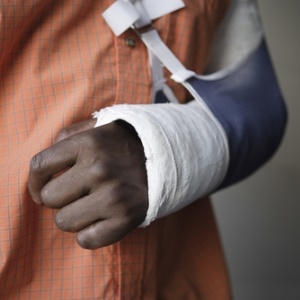
Emergencies need quick action, not panic. It sounds like a cliché, but remaining calm is the key to acting sensibly and with confidence. The person in need of help will need your assurance and sensing your own anxiety and panic will only increase his/her distress.
Don’t wait for an emergency before you refer to these pages. Prepare yourself now by studying this information and, better still, attend a first aid course. The information given here is not meant to replace practical training that is given on a first-aid course. Contact first-aid training organisations for courses in your area. If you have taken a course previously, make sure your skills are up-to-date. Make sure that your childminder knows first aid. Again, don’t wait until it is too late.
Post emergency telephone numbers next to all phones in your home and office and save them on your cell phone. Important numbers to keep are of an emergency service, fire department, nearest hospital, the poison information centre and your GP. Know the shortest route to hospital.
Any family member with a serious medical condition, such as a heart condition, epilepsy diabetes or a drug allergy, should wear a Medic Alert tag or carry a card. This will ensure that proper care can be given. Medic Alert identification can be obtained at your pharmacy or doctor. List all serious medical conditions of the family members and keep the list handy. Teach your children how to call emergency numbers, and tell them to show the list to emergency medical personnel.
Keep a well-stocked first aid kit at home and in your car.
There is a wide spectrum of conditions that can be considered emergencies. Many may turn out not to be as serious as initially suspected, but if in doubt, it is better to react promptly now, than have late regrets.
Dealing with accidents and injuries
- Stay calm, sum up the situation quickly and act fast.
- Before you act, adopt the SAFE approach. Shout for assistance, Approach with care, Free the victim from dangers, and Evaluate the victim. Protect yourself and the injured person from danger or further injury. Look out for hazards such as oncoming traffic and fire. If you cannot reach the person without putting yourself in great danger, leave him or her and call the emergency services immediately. Remember that you will not be able to help anyone if you become a victim yourself.
- Do not move the person unless there is imminent danger such as a fire. If the person must be moved, there should be someone controlling the neck and head to keep them in alignment, and at least two other people on either side of the person to lift him without moving the spine.
- Get help. Call out for someone to phone for emergency assistance.
- Check for breathing and circulation. Do the ABCs: Airway, breathing and circulation.
- Prioritise problems. Remember that the most obvious injury is not necessarily the most serious. Deal with the most life-threatening problems (such as blocked airway and excessive bleeding) first.
- Check to see if the person is wearing a Medic Alert tag or other medical identification.
- Loosen tight clothing and cover the person to keep him or her warm.
- If there are no suspected back and neck injuries and breathing is normal, move the person into the recovery position.
- In the case of serious injury or shock, don't give anything to eat or drink.
When to call an ambulance
An ambulance is not always the fastest way to reach a hospital. A private car may be a better option. Go to the hospital yourself if it is close by but let someone phone the emergency department ahead.
In case of poisoning, contact the poison control centre immediately as emergency steps need to be taken before leaving for the hospital.
Call an ambulance if:
- You don't know what to do or are uncertain of the severity of the injury
- Someone is unconscious or struggles to breathe
- You suspect a back or neck injury
- Someone may be having a heart attack
- A person is seriously injured
- A small child is injured unless you have another adult with you who could drive
- There is serious bleeding that you cannot stop
When you call an ambulance, state clearly:
- The site of the emergency (include names of cross streets, if possible)
- What happened to the victim and the victim’s condition
- The number of the people injured
- The age of the victim
- Your name and contact telephone number
- Any first aid currently being given
Don't hang up until the operator tells you to. This way, you'll be sure that you have given all the necessary information.
Going to hospital
- Phone the emergency department ahead to alert them that you are coming.
- If possible, get another adult to travel with you.
- Support any injured limbs.
- If the person is bleeding, take sufficient bandages or clean cotton fabric with you.
- Make the person as comfortable as possible.
- Take any medication that the person uses with you to hospital.




 Publications
Publications
 Partners
Partners














